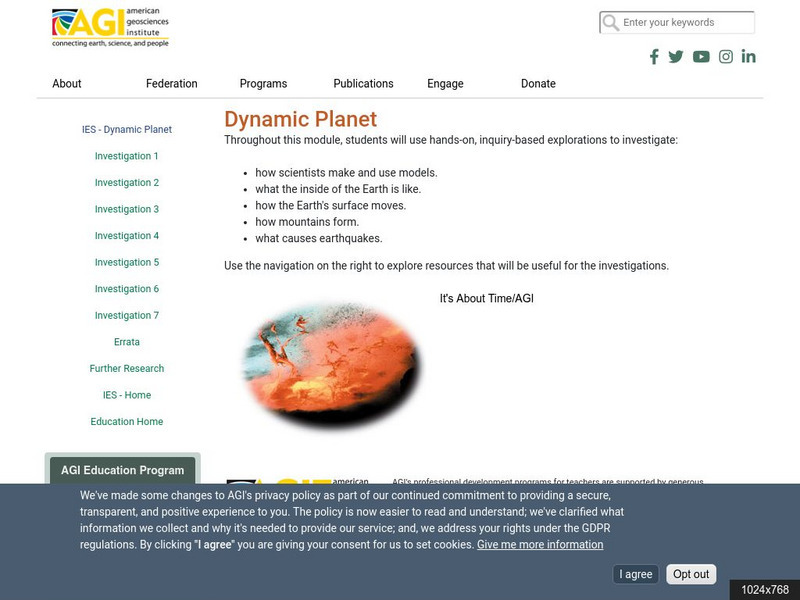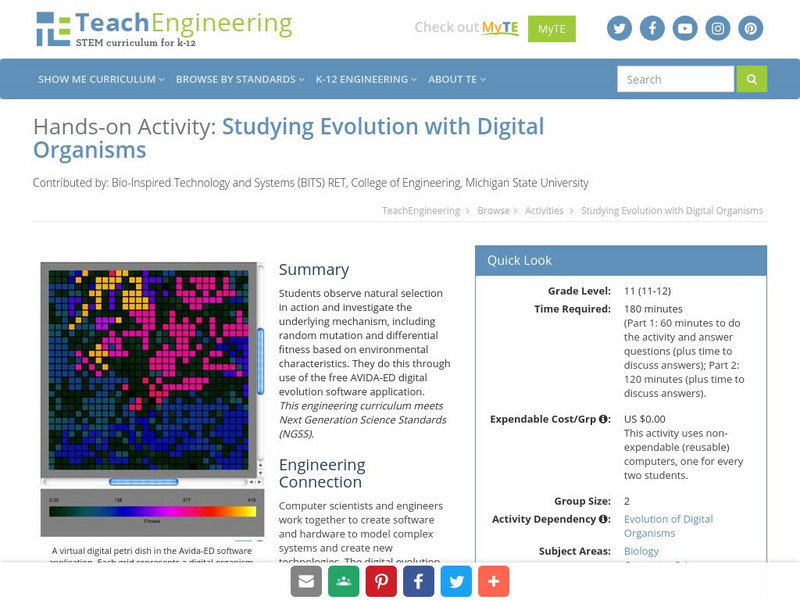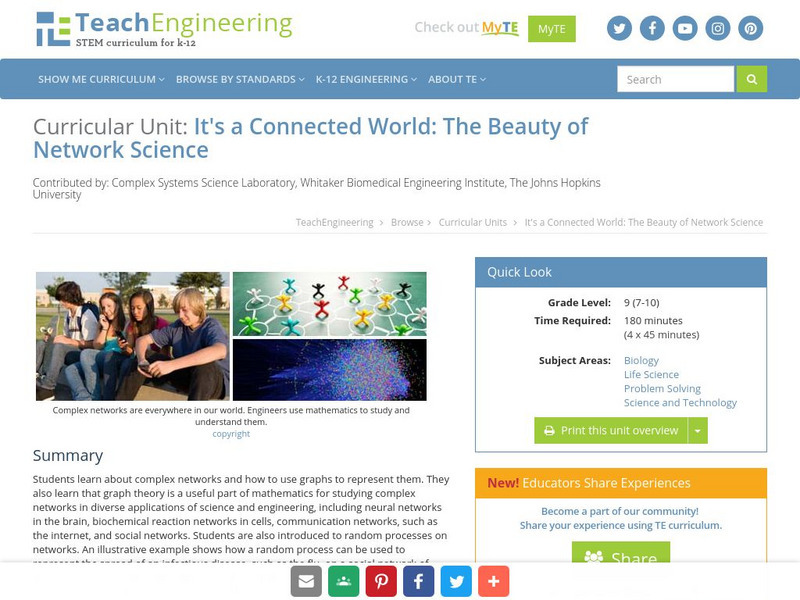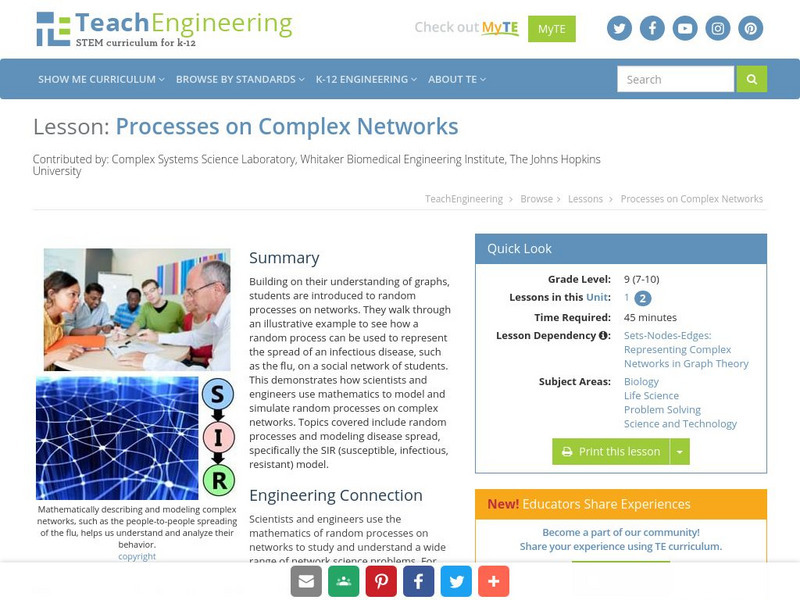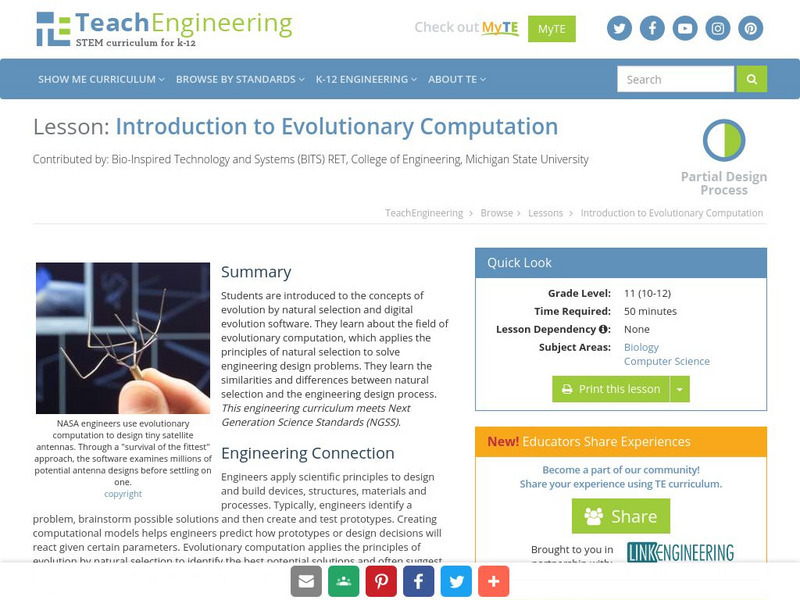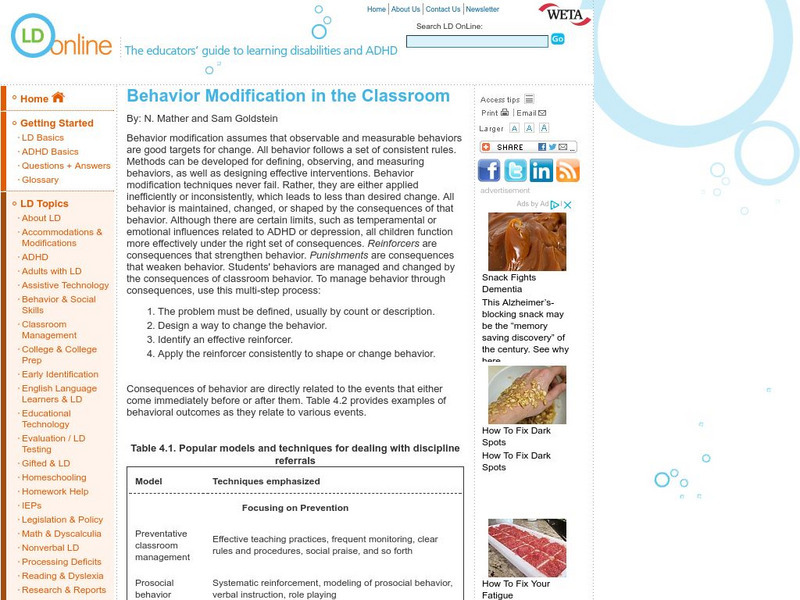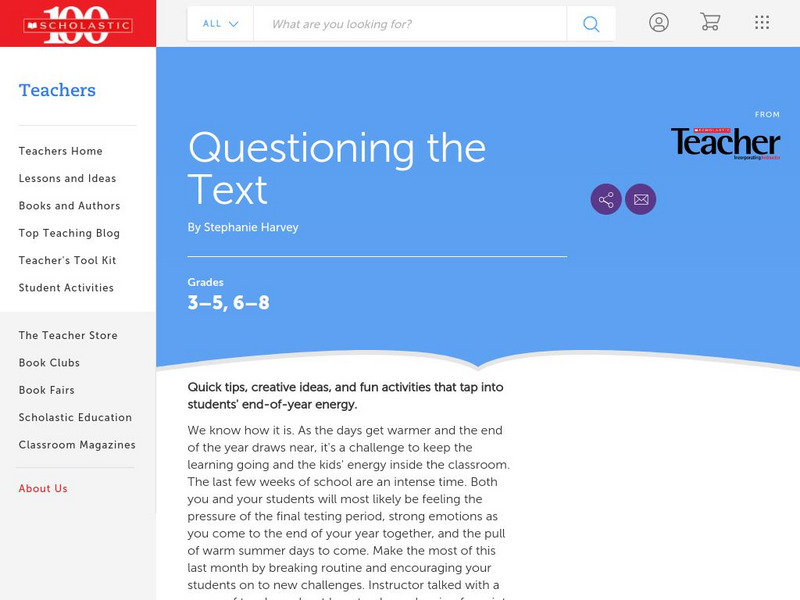Science Buddies
Science Buddies: Ask a Cricket, 'What Is the Temperature?'
A cricket as a thermometer? Yes, that's right. In this science fair project, you'll investigate how the chirps of these tiny creatures can do more than lull you to sleep-they can tell you the temperature.
Vision Learning
Visionlearning: Practice of Science: Introduction to Research Methods
An explanation indicating that there is more than one method of scientific research.
American Association for the Advancement of Science
Aaas: Project 2061: Topic: Models
[Free Registration/Login Required] Create a science test that checks for student understanding in science, for common misconceptions, as well as for correct ideas. This is a list of key ideas related to Models. For each key idea, you...
Harvard University
Harvard Smithsonian: Everyday Classroom Tools
The focus of this series of lessons is to engage students in an exploration of the world around them. The emphasis is on inquiry as students learn about the earth, sun, light, shapes and more.
University of Saskatchewan (Canada)
University of Saskatchewan: Algebra 2 Review
A more advanced review of Algebra II concepts allows students to test their readiness for higher level math courses. Topics range from absolute value to rational expressions.
Other
C4 Molecular Library: Alkynes
The C4 molecular library has models of alkynes that can be rotated and examined in 3D. Choose viewer, select the hydrocarbon menu from CONTENTS and scroll down to alkynes.
Other
Molecular Movies: 3 D Tutorials for Biologists
A collection of visualization-oriented tutorials for creating 3D animations for use in your biology classroom. Search by difficulty level, software package, or 3D topic area.
American Geosciences Institute
American Geosciences Institute: Dynamic Planet
Seven hands-on lessons module where students learn about our dynamic planet. These inquiry-based explorations investigate scientific models, earthquakes and seismic waves, Earth's interior, Earth movements, the lithosphere, plate...
South Carolina Educational Television
Etv: Visual and Performing Arts: Sculpture
Take a one-minute tour through the history of sculpture. View a variety of sculpture techniques and be a sculpture critic. Visit the sculpture studio and learn about carving, casting and modeling. Meet artists, and see them at work....
South Carolina Educational Television
Etv: Artopia: Sculpture
Be an art critic, and compare and contrast sculptures in this virtual art gallery. Watch short video clips about this art medium, see student sculptures, send an e-art card, or virtually sculpt your own creation.
TeachEngineering
Teach Engineering: Studying Evolution With Digital Organisms
Students observe natural selection in action and investigate the underlying mechanism, including random mutation and differential fitness based on environmental characteristics. They do this through use of the free AVIDA-ED digital...
TeachEngineering
Teach Engineering: Competing Evolved & Engineered Digital Organisms
Students engineer and evolve digital organisms with the challenge to produce organisms with the highest fitness values in a particular environment. They do this through use of the free Avida-ED digital evolution software application. The...
TeachEngineering
Teach Engineering: It's a Connected World: The Beauty of Network Science
Students learn about complex networks and how to use graphs to represent them. They also learn that graph theory is a useful part of mathematics for studying complex networks in diverse applications of science and engineering, including...
TeachEngineering
Teach Engineering: Processes on Complex Networks
Building on their understanding of graphs, young scholars are introduced to random processes on networks. They walk through an illustrative example to see how a random process can be used to represent the spread of an infectious disease,...
TeachEngineering
Teach Engineering: Introduction to Evolutionary Computation
Young scholars are introduced to the concepts of evolution by natural selection and digital evolution software. They learn about the field of evolutionary computation, which applies the principles of natural selection to solve...
Exploratorium
Exploratorium: Microscope Imaging Station: Model Organisms
Using model organisms is very important in scientific research. This lesson plan will help young scholars see why the zebrafish, sea urchin, and fruit fly are commonly used.
Exploratorium
Exploratorium: Microscope Imaging Station: Broken Hearts
Zebrafish are used to study heart abnormalities. This lesson plan helps students understand how and why they are important scientific models. Includes handouts.
Other
Great Lakes Bioenergy Research Ctr.: Exploring Energy Transformations in Plants
This set of lessons has students investigate how plants obtain energy from different sources to support their growth and development. Students conduct investigations, make predictions, and construct scientific explanations of the...
Other
Water on the Web
Water on the Web (WOW) is an advanced site allowing students to actively participate in data analysis from real research sites. Lesson plans on a range of topics are provided. There is also a tutorial for using Excel to graph WOW data.
HotChalk
Hot Chalk: Lesson Plans Page: Writing an Autobiography Using Pictures
This is a 4-day lesson on how to write an autobiography. Students also learn to take digital pictures of themselves and use them in their writing.
PBS
Pbs: El Nino
You can link to the anatomy of El Nino, chasing El Nino, and El Nino's reach. There is a resource page and a search page.
LD Online
Ld Online: Behavior Modification in the Classroom
Would you like to reinforce or diminish certain behaviors im your classroom? This article explains the fundamentals to effectively use behavior modificatiom in the school setting.
Scholastic
Scholastic: Questioning the Text
In this magazine article originally featured in Instructor, the reading strategy called "questioning the text" is explained by the renowned literacy consultant and staff developer, Stephanie Harvey. The steps included for questioning the...
ArtLex
Art Lex: Sculpture in the Round Making a Portrait in Clay
Artlex discusses two kinds of portraiture, caricatures and realistic portraits, as part of a lesson plan with step-by-step instructions on how to make a bust out of clay. An interesting game, "Who the Heck Is That?," asks the participant...









